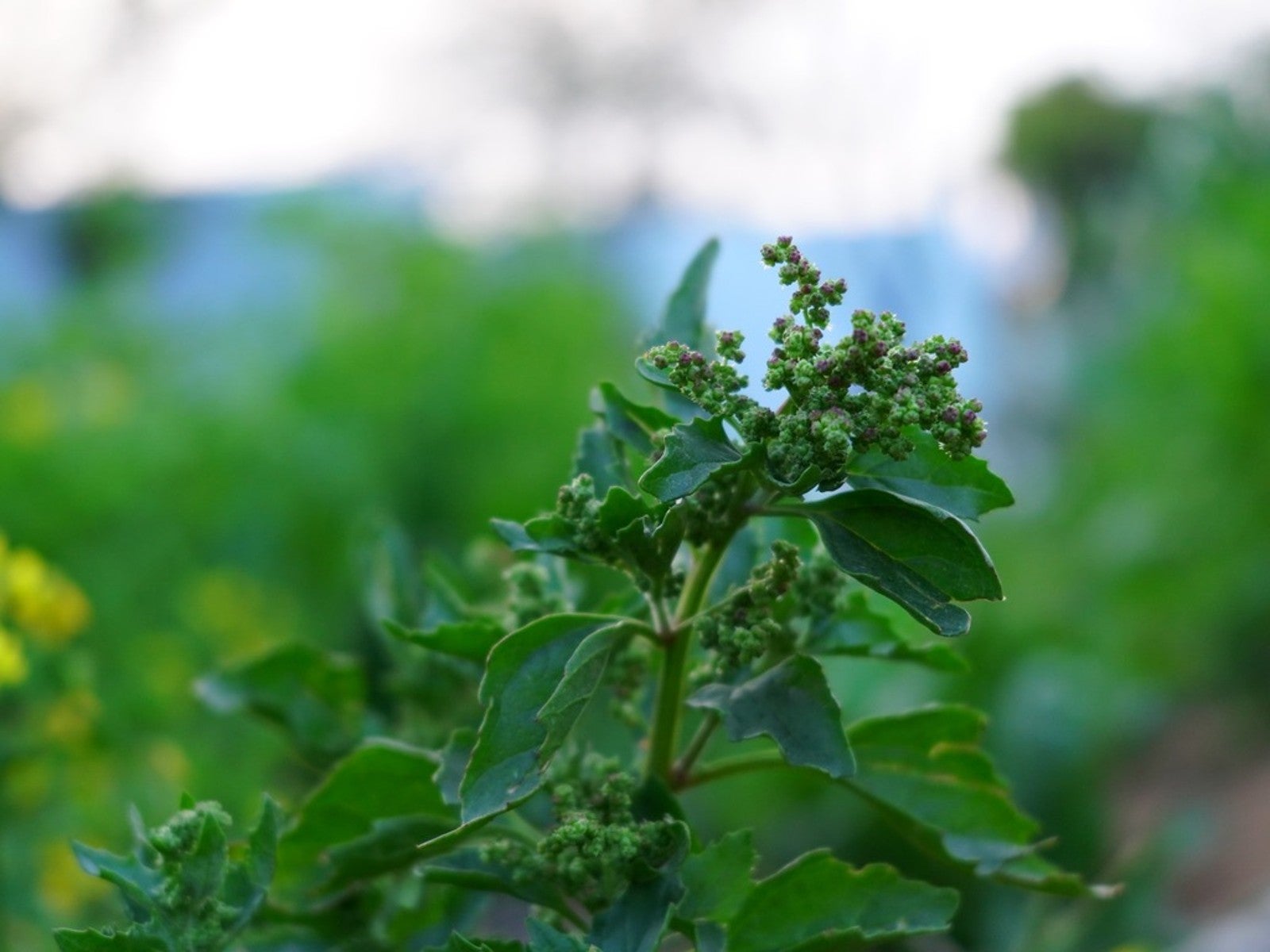Nettleleaf Goosefoot Weed Control: How To Get Rid Of Nettleleaf Goosefoot


Nettleleaf goosefoot (Chenopodium murale) is an annual weed closely related to chard and spinach. It invades lawns and gardens throughout the U.S., and if left to its own devices, it can take over. Learn about nettleleaf goosefoot identification and control in this article.
Nettleleaf Goosefoot Identification
You can recognize nettleleaf goosefoot weeds by the roughly triangular or lancet-shaped leaves and the dense clusters of seeds at the tips of the stems. The dark green, glossy leaves have toothed edges and they give off a strong smell when you crush them. These plants grow up to 3 feet (1 m.) tall.
Controlling nettleleaf goosefoot in the lawn is a matter of practicing good lawn care. Water regularly and follow a good fertilization schedule for your region and type of grass. A strong, healthy lawn can crowd out the weed. Mow often so that the goosefoot never matures enough to produce seeds. Since it is an annual, it will die out if it isn’t allowed to go to seed.
How to Get Rid of Nettleleaf Goosefoot in Gardens
Controlling nettleleaf goosefoot in the garden is a little more challenging. Although a broadleaf herbicide will kill the weed, it will also kill your garden plants. The only reliable method of eliminating the weed from the garden while leaving your plants intact is to pull the weeds.
When you pull, try to get as much of the roots as possible. If you let the plants get too big before you pull, the roots spread and entangle themselves with the roots of other plants in the garden. A sharp hoe can help you with your nettleleaf goosefoot weed control program.
Is Nettleleaf Goosefoot Edible?
Yes, it is! Eaten fresh, it has a flavor that resembles lettuce. You can cook it like you would spinach or chard for a unique vegetable with a pleasant flavor. The seeds taste a lot like quinoa, but you’d have to have a lot of plants to get enough seeds to cook.
Sauté goosefoot in butter, tossing in some minced garlic or onion, if desired. Experiment with some of your favorite herbs or enjoy it plain. You can also toss a few leaves into your favorite soup.
Sign up for the Gardening Know How newsletter today and receive a free copy of our e-book "How to Grow Delicious Tomatoes".

Jackie Carroll has written over 500 articles for Gardening Know How on a wide range of topics.